California Date Varieties
The Ultimate Guide to Dates grown in the Coachella Valley
Fresh Fruits or Dried Fruits? Finally, the Definitive Answer!
California Dates are nature’s only NATURALLY DRY FRESH FRUIT. They are a low-moisture whole fruit with less than 25 percent moisture. The moisture content is the main difference in how dry the dates will be when harvested, which changes throughout the ripening stages.
Fresh California Dates do not undergo a drying process after harvesting. They are washed, sorted, packaged, and shipped, and can be found in the produce aisles of your favorite grocery stores.
There are also dried dates – dates that have been dehydrated after harvesting. With the moisture removed, these dates have a longer shelf life and are often found in the baking aisle of your favorite grocery store.
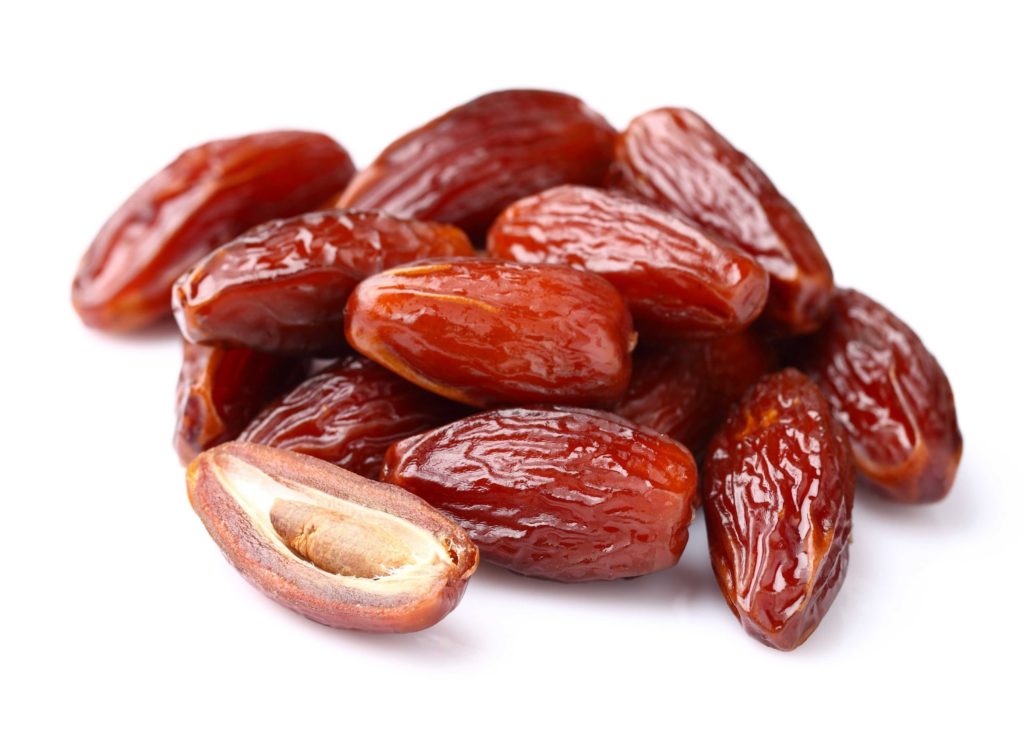
Types of Dates:
Soft, Semi-Soft, Dry (or Bread)

Soft
Khadrawy, Halawy and Medjool
Soft dates have a soft flesh, high moisture content and relatively low sugar containing fully inverted sugars and are the most perishable. Since these varieties are fragile, they must be manually harvested, carefully handled and kept refrigerated to prevent deterioration.

Semi-soft
Deglet Noor and Zahidi
Semi-dry dates have firmer flesh and relatively lower moisture and a high sugar content. Although the total sugars in the semi-dry dates are approximately equal to those in the softer dates, the sugars have not fully inverted.

Dry or Bread
Thoory
Dry dates such as the Thoory variety have high sugar content, very low moisture and dry, hard flesh. They are often called bread dates because of their firm, pasty-like texture and nutty flavor.
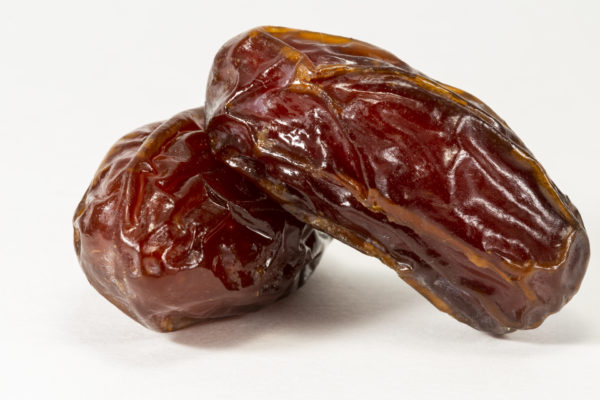
Medjools
Medjools are another widely known date grown in the Coachella Valley. The name comes from Majul meaning “unknown,” probably referring to its origin. The Medjool is a large date, about two inches long and 1 ¼ in diameter with bright bay to reddish brown coloration. The thin, tender skin is deeply wrinkled and creased. Its translucent amber flesh is firm and meaty with almost no fiber around the seed and a rich, characteristic flavor.
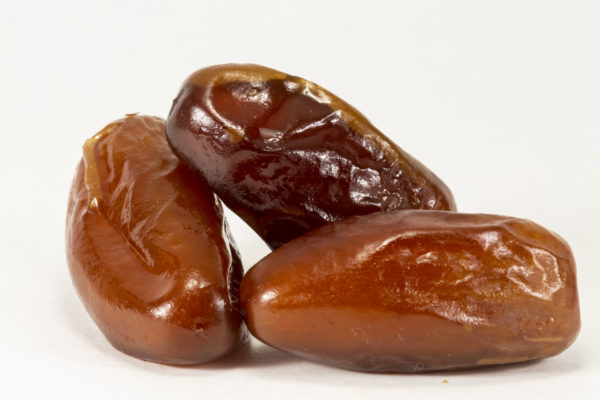
Deglet Noor
Deglet Noor dates likely originated in the 17th century in the Algerian Sahara Desert. A superior date, hundreds of Deglet Noor oases were established in Algeria and southern Tunisia during the 1800s. USDA researcher Walter Swingle first introduced the variety into the United States in 1900.
Deglet Noor palms have long, slightly arched leaves with relatively stiff feather-like leaves.
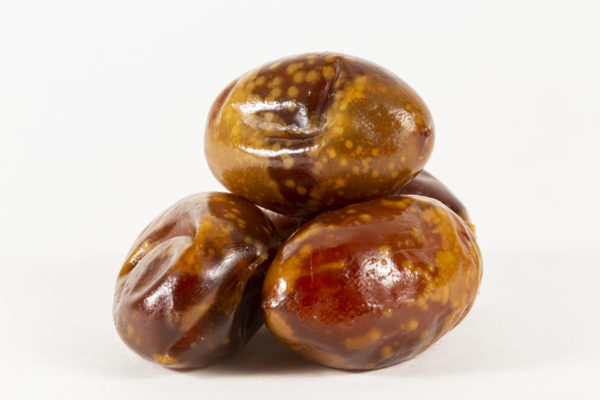
Zahidi
The Zahidi’s name means “nobility,” perhaps for its stately appearance. Closely set, even-angled pinnae and slightly curved midrib give the Zahidi an appearance of solidity and formality. Foliage is green with whitish blooms. Zahidi is Iraq’s most common variety, first introduced to the United States in 1902. Most of California’s commercial plantings are traced to 1913 importations.
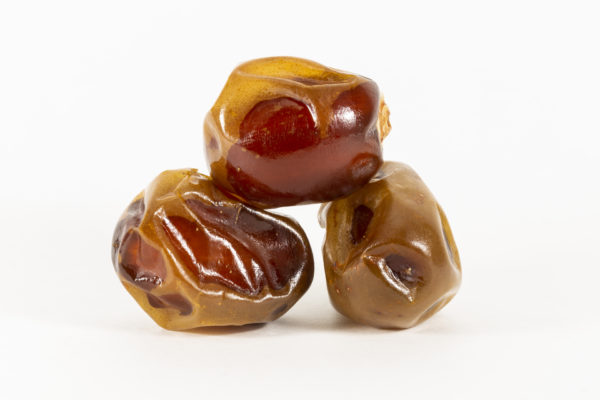
Barhi
Barhi, named for the hot Arabic winds, Barh, which influence the flavor during ripening. A soft type, ripening early to mid-season, this medium, oval date has thin skin, tender yet firm flesh and soft, syrupy texture. The Khalal color is buff yellow turning golden amber in the Rutab stage, to mahogany brown at the Tamar stage. Its smooth honey flavor is best enjoyed at the Rutab stage.
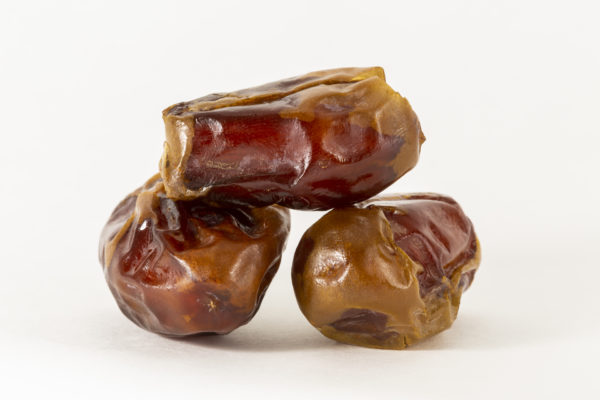
Khadrawy
Khadrawy, Arabic for “green,” refers to the greenish cast of the fruit as it begins to soften and to its distinctive bright green foliage. Off shoots were first imported in 1902 from Basra, Iraq by noted USDA plant explorer Fairchild. The Khadrawy palm grows more slowly and is smaller than other commercial varieties.

Halawy
Halawy, meaning “sweet” in Arabic, has a very rich, distinctive flavor. Like Zahidi, the Halawy was first imported in 1902, but commercial trees today are from later importation.
Medium long, green fronds with broad, stiff pinnae hold a uniform curvature and form an open center at the palm’s crown.
Additional date varieties grown in California
Black Dates
Black dates include varieties such as the Abbada, Black Sphinx and the Hayany, grown as specialty items. Almost black at maturity, with such soft flesh that they cannot be shipped.
Thoory
Thoory, often called a “bread date” is the driest variety with a firm, chewy, less sticky flesh. This is the staple date of Nomadic tribes who travel the desert countries.
Empress
Empress, a seedling of Thoory first planted in 1916, produce medium to large oblong dates that ripen at mid-season. From the Khalal stage they are yellow-amber becoming medium brown at maturity. A medium sized soft date, they possess a rich flavor.
Honey
Honey dates, also from Thoory seedlings, ripen early to mid-season, are medium size, oblong to oval shape, buff yellow to amber at the Khalal stage, to a reddish brown at maturity. They have a melting, mild flavor.
Dayri
Dayri, from southern Iraq, is almost black when ripe. It a long and slender with a soft flesh and distinctive flavor.
Amir Haji
Amir Haji is a real delicacy with thin, tender skin covering thick, soft flesh that is rich in flavor. Called “the visitor’s date” in its native northern Iraq, Amir Haji dates are presented to special guests.
Iteema
Iteema is a large, oblong, light amber-color date with a very sweet taste. Fairly common in Algeria, it’s susceptibility to rain damage makes it difficult to grow commercially here.
Hayany
Hayany is an Egyptian date whose name is a common man’s name. It probably derived from the owner of some original palms. Hayany is distinguished by its deep red to almost black fruit color and is best eaten fresh.
